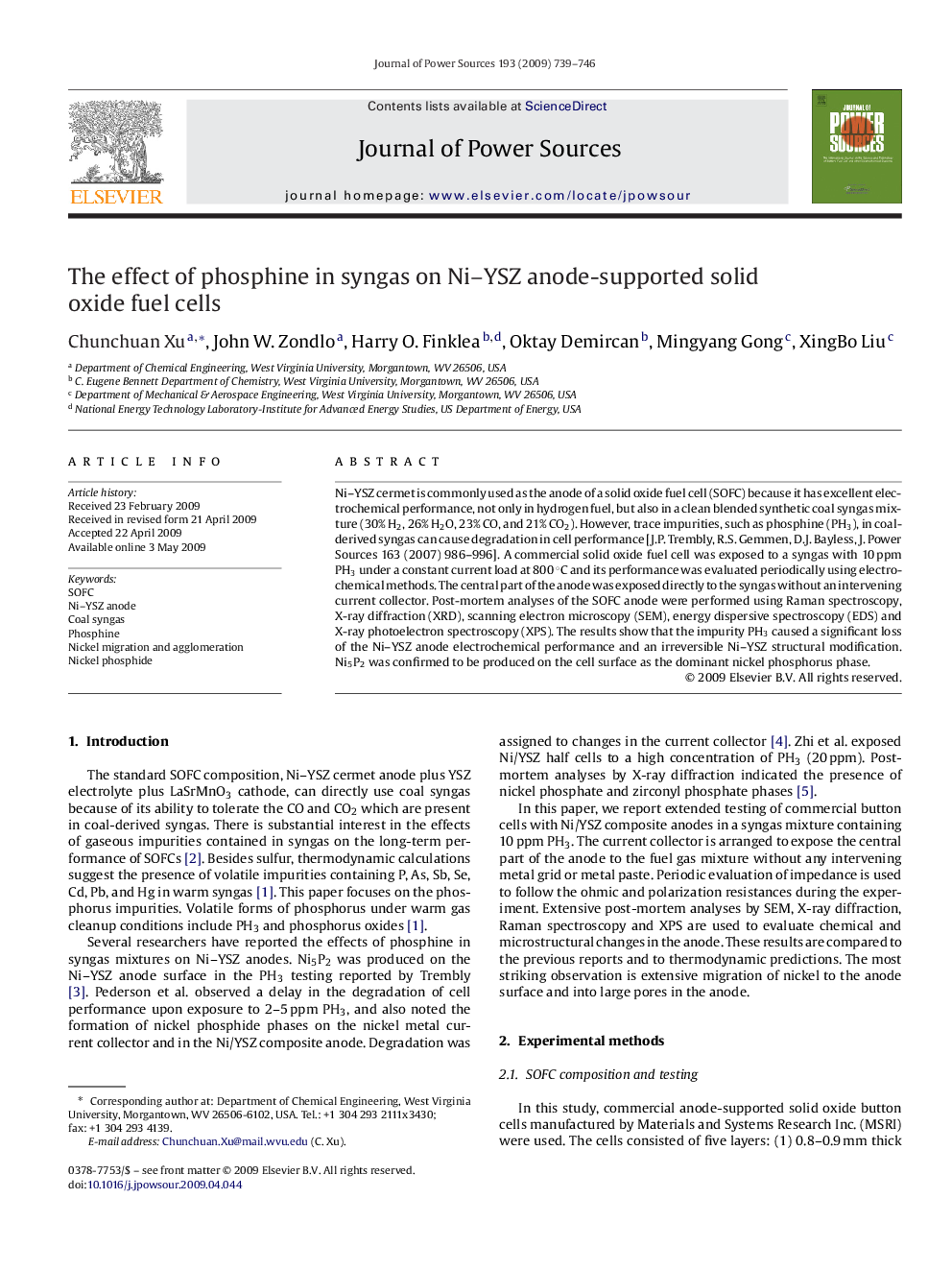| Article ID | Journal | Published Year | Pages | File Type |
|---|---|---|---|---|
| 1285185 | Journal of Power Sources | 2009 | 8 Pages |
Ni–YSZ cermet is commonly used as the anode of a solid oxide fuel cell (SOFC) because it has excellent electrochemical performance, not only in hydrogen fuel, but also in a clean blended synthetic coal syngas mixture (30% H2, 26% H2O, 23% CO, and 21% CO2). However, trace impurities, such as phosphine (PH3), in coal-derived syngas can cause degradation in cell performance [J.P. Trembly, R.S. Gemmen, D.J. Bayless, J. Power Sources 163 (2007) 986–996]. A commercial solid oxide fuel cell was exposed to a syngas with 10 ppm PH3 under a constant current load at 800 °C and its performance was evaluated periodically using electrochemical methods. The central part of the anode was exposed directly to the syngas without an intervening current collector. Post-mortem analyses of the SOFC anode were performed using Raman spectroscopy, X-ray diffraction (XRD), scanning electron microscopy (SEM), energy dispersive spectroscopy (EDS) and X-ray photoelectron spectroscopy (XPS). The results show that the impurity PH3 caused a significant loss of the Ni–YSZ anode electrochemical performance and an irreversible Ni–YSZ structural modification. Ni5P2 was confirmed to be produced on the cell surface as the dominant nickel phosphorus phase.
